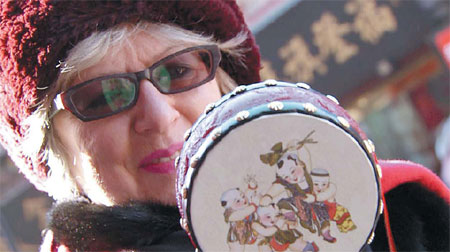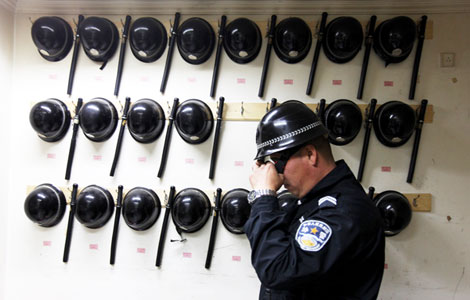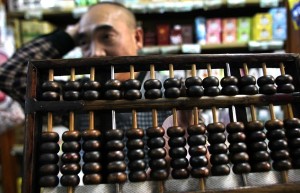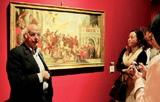There was once a fish ...
By Xing Yi ( China Daily Europe ) Updated: 2013-12-06 10:04:44She went to China years ago and grew to love the country's folk art
A large part of Irina Zakharova's life is associated with toys, children and art. She has a doctorate in classical art and art theory from Lomonosov Moscow State University, the most prestigious university in Russia, and started work at the Pushkin State Museum of Fine Arts soon after graduating in 1977.
Four years later, her husband was appointed cultural counselor to China, and Zakharova moved to Beijing with him and their daughter.
Growing up when China and the Soviet Union had a very close relationship, Zakharova was as interested in China as she was curious. But she was also reluctant to leave her job at the museum, which she loved. "It's not a job," she says. "It's my life."
Happily, she soon found a way to continue her artistic pursuit and museum work during her stay in China.
Soon after the family arrived, Zakharova remembers that her daughter received a birthday gift from a Chinese friend, a folk toy of a boy sitting on a fish.
"Why is he sitting on a fish?" her daughter had asked.
"The question brought me back to my childhood in the 1950s," says Zakharova, now in her 60s. "I saw a lot of Chinese folk art at that time, and I had been puzzled, too."
After asking her Chinese friends, Zakharova found out that one word for fish in Chinese sounds like another word meaning abundance, so the fish has come to represent hopes for affluence.
Zakharova soon realized the richness of Chinese traditional culture behind folk toys and started collecting them. Now she often organizes touring exhibitions of her toys, and through that has become an advocate of Chinese traditional culture.
Her toys - she has more than 5,000 - have been exhibited not only in Russia, but also in other member countries of the Shanghai Cooperation Organization, including Kazakhstan, Kyrgyzstan, Tajikistan and Uzbekistan.
In recent years, her efforts have expanded to organizing art exhibitions centering on the exchange and inheritance of folk culture through children's collaboration and creativities among the SCO countries.
"Collecting Chinese folk toys became part of my life," says Zakharova, who would hunt down local traditional toys wherever she traveled in China in the 1980s.
Her collection includes all genres, such as rattle-drum, clay figurine, paper-cut and traditional lunar New Year's paintings.
"I study while I collect, because I think without studying the culture behind those toys, the process of collecting is incomplete. For me the most important thing is not finding the oldest toy, but finding contemporary folk toys which preserve traditions."
It is not easy for a Westerner to understand Chinese traditions, and Zakharova says she was at a loss initially.
"A fish is the symbol of affluence, and peach represents longevity. A rat is a horrible creature for Europeans, but here it is one of the most auspicious Chinese zodiac signs."
Every province in China has its particular toys embedded with local tradition, such as the ninigou, literally muddy dog, in Huaiyang county, Henan province.
Moreover, some folk toys are associated with Chinese mythology, such as Fu Xi and Nyu Wa, who were the first gods to come out of chaos. Nyu Wa, with her human body and serpent tail, is the mother creator.
"Learning all this, on one hand, is interesting, but on the other hand it is very complicated for me," Zakharova says. "However, little by little I have discovered that there are common themes in Chinese and Western cultures.
"Two figures standing by each other usually implies love, two butterflies dancing in the air is about the story of Liang Shanbo and Zhu Yingtai, which can be compared with the classical love story of Romeo and Juliet."
Zakharova speaks little Chinese, but she knows a lot of famous Chinese folk art craftsmen, collectors and researchers.
Meeting the late Li Cunsong, a well-known Chinese folk toy collector, played an important role in making Zakharova decide to collect folk toys.
"We met at a folk art exhibition in 1982," Zakharova recalls, and says she had no worries communicating because "the art does not need to be translated".
Li, an expert on Chinese folk toys and an author of three books on the subject, gave Zakharova valuable help and suggestions.
"He was a real master, and getting to know him was the most important event in my life."
|
|
|
|
|
|
|
|
European Weekly
 China taken on as building partner
China taken on as building partner
Meetings with central and Eastern European heads underline China's global roal.























